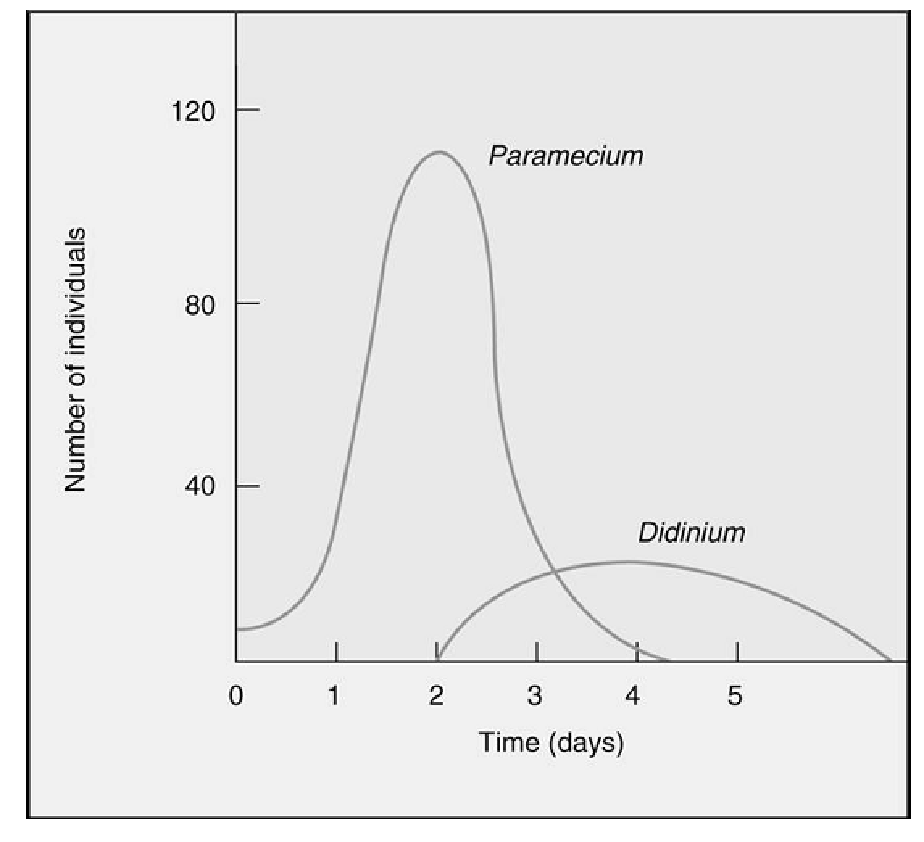Which statement is the correct interpretation of the graph?

A. The population of Didinium goes extinct with the addition of Paramecium on day 4.
B. The population of Didinium continues to increase and remains high even after the extinction of the Paramecium.
C. The population of Paramecium goes extinct with the addition of Didinium on day 8.
D. The population of Didinium increased but then went extinct after the population of Paramecium went extinct.
E. The population of Didinium is able to increase at the expense of the Paramecium population. After a brief period both populations are able to coexist.
Clarify question:
What is the key concept addressed by the question?
What type of thinking is required?
Gather Content:
What do you already know about the relationship between the two species? What other information is related to the question?
Choose Answer:
Given what you now know, what information is most likely to produce the correct answer?
Reflection on Process:
Did your problem-solving process lead you to the correct answer? If not, where did the process break down or lead you astray? How can you revise your approach to produce a more desirable result?
D. The population of Didinium increased but then went extinct after the population of Paramecium went extinct.
Clarify question:
What is the key concept addressed by the question?
The key concept is being able to interpret the interaction of two species.
What type of thinking is required?
This is an analysis question. You will need to extract the information from the graph in order to determine the correct answer.
Gather Content:
What do you already know about the relationship between the two species? What other information is related to the question?
In the situation presented in the question, the Paramecium is the prey and Didinium is the predator. Paramecium is introduced first and the Didinium is introduced later.
Choose Answer:
Given what you now know, what information is most likely to produce the correct answer? The Didinium increased at the expense of the Paramecium (they were eating them). Once the Paramecium population crashed the Didinium died of starvation.
Reflection on Process:
Did your problem-solving process lead you to the correct answer? If not, where did the process break down or lead you astray? How can you revise your approach to produce a more desirable result?
You need to extract information from the graph in order to select the correct answer. Were you able to select the correct answer?
You might also like to view...
The atomic number of the atom depicted in the figure is
a. 5. b. 7. c. 8. d. 15. e. 22.
Rhodopsin
a. is a pigment. b. is found in rods. c. absorbs photons of blue-to-green light. d. is concentrated at the edges of the retina. e. includes all of these descriptions
Hemostasis in vertebrates includes all of the following EXCEPT
a. blood clot formation. b. vessel constriction. c. release of iron to aid in the clumping of platelets. d. vessel spasms. e. platelets releasing substances that cause them to attract each other.
Explain the consequence of overdominance in maintaining a deleterious allele in a population as it relates to genetic diversity
What will be an ideal response?